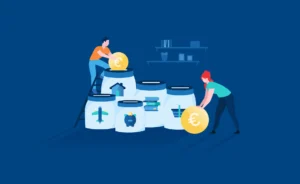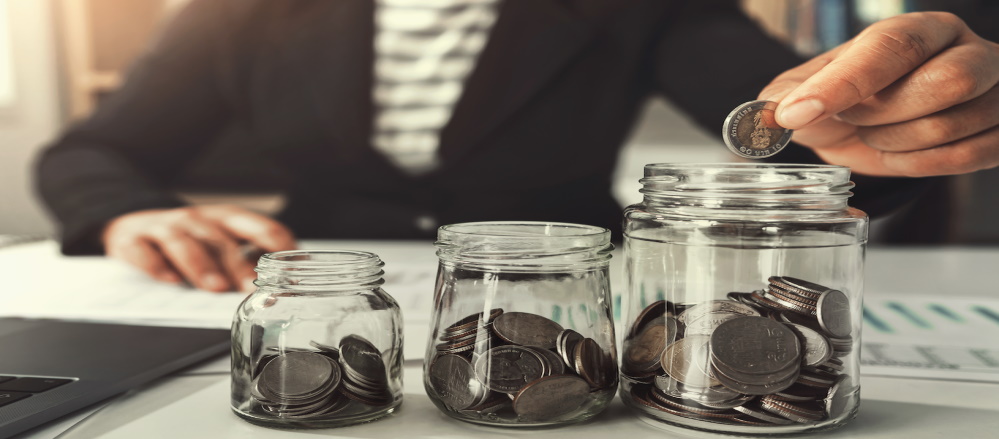When we talk about “https://finanzasdomesticas.com/que-es-el-ahorro/”, we are talking about saving money. Saving means keeping some of the money you have for later, instead of spending it all now. It’s like putting money in a piggy bank for future use.
“Que-es-el-ahorro/” helps us plan for big things we want to buy or emergencies that might come up. By saving a little bit regularly, we can make sure we have enough when we need it.
What is “que-es-el-ahorro/”
When we talk about “que-es-el-ahorro/”, we’re referring to the idea of saving money. Saving money means not spending everything you have right away. Instead, you keep some for later. This way, you have money saved up for things you might need in the future.
In simple terms, “https://finanzasdomesticas.com/que-es-el-ahorro/” is like putting your money into a safe place where you can use it later. For example, you might put your allowance in a piggy bank or a savings account. This helps you have money for important things like buying a toy or saving for a special treat.
Saving money is very helpful because it makes sure you’re prepared for unexpected costs. By practicing “que-es-el-ahorro/”, you can avoid worrying about what to do if something comes up that needs extra cash. It’s a smart way to manage your money and make sure you have what you need when you need it.
Why is “que-es-el-ahorro/” Important
“Que-es-el-ahorro/” is important because it helps us prepare for the future. When you save money, you can plan for big purchases, like a bike or a video game. It also means you won’t have to scramble for cash if something unexpected happens, like needing to buy a gift or fixing a broken toy.
Saving money can also help you reach your goals. For example, if you want to buy something special, “que-es-el-ahorro/” helps you gather the money over time. This means you don’t have to spend all your money at once. Instead, you can save a little bit regularly and watch your savings grow.
Having savings gives you peace of mind. You know you have money set aside for future needs, which reduces stress. By understanding “que-es-el-ahorro/”, you learn the value of managing your money wisely, which is a useful skill throughout your life.

How to Start “que-es-el-ahorro/”
To start “que-es-el-ahorro/”, first decide how much money you want to save. You can start with a small amount, like a few coins or a few dollars each week. The important thing is to make saving a habit. Choose a safe place to keep your savings, like a piggy bank or a savings account.
Next, set goals for your savings. Maybe you want to save for a new toy or a special outing. Having a goal helps you stay motivated. You can also create a savings plan, like saving a certain amount every week or month. This way, you can see your money grow over time.
Finally, keep track of your savings. Check how much you have saved and how close you are to your goal. Tracking helps you stay on top of your savings and see your progress. Remember, “que-es-el-ahorro/” is a journey, and every little bit saved helps you get closer to your goal.
Tips for Effective “que-es-el-ahorro/”
Effective “que-es-el-ahorro/” starts with setting clear goals. Decide what you want to save for and make a plan to reach that goal. For example, if you want a new toy, calculate how much it costs and how much you need to save each week to buy it.
Another tip is to make saving a regular habit. Try to save a small amount of money regularly, like every week or month. Consistency is key. Even saving just a little bit at a time can add up to a significant amount over time.
Lastly, avoid spending your savings on unnecessary things. Stick to your plan and remember why you are saving. This helps you stay focused on your goal. Effective “que-es-el-ahorro/” requires discipline, but it’s worth it when you see your savings grow and reach your goals.
“que-es-el-ahorro/” for Kids: How to Save Money
When explaining “que-es-el-ahorro/” to kids, it’s important to make it fun and easy to understand. Start by showing how saving money works in a simple way. You can use a piggy bank or a jar to collect coins and small amounts of cash. Let the kids see how their savings grow over time.
Encourage kids to set small goals for their savings. For example, if they want a new toy or a special treat, they can save a little bit of their allowance each week. This way, they can watch their savings add up and feel excited as they get closer to their goal. Saving money becomes a rewarding experience when kids see the results of their efforts.
Another way to teach “que-es-el-ahorro/” is to make it a game. Create a savings challenge or a fun chart where kids can track their progress. Celebrate milestones to keep them motivated. This approach helps kids understand the value of saving money and how it can help them achieve their goals.
Finally, explain that saving money is not just about getting things but also about being prepared for the future. Help them understand that having savings means they won’t have to worry about unexpected expenses. By making saving money a regular part of their routine, kids learn a valuable life skill that will benefit them as they grow up.
Common Mistakes in “https://finanzasdomesticas.com/que-es-el-ahorro/”
One common mistake in “https://finanzasdomesticas.com/que-es-el-ahorro/” is not setting clear goals. Without a specific goal, saving money can feel pointless and less motivating. It’s important to decide what you are saving for, whether it’s a new gadget, a special trip, or an emergency fund. Having a goal makes it easier to stay focused and committed.
Another mistake is not saving regularly. If you only save when you remember or when you have extra money, you might not save as much as you could. Creating a habit of saving a small amount regularly helps build your savings over time. Even if it’s just a few dollars a week, consistency is key.
Spending your savings on unplanned purchases is another common error. Once you have set money aside for a specific goal, avoid using it for things that are not part of your plan. Stick to your savings goals and only use your saved money for the intended purpose. This helps you reach your goals faster and keeps your savings on track.
Lastly, not keeping track of your savings can lead to problems. Without tracking, you may not know how much you’ve saved or how close you are to reaching your goal. Use a savings tracker or a simple chart to monitor your progress and make adjustments as needed.
How “https://finanzasdomesticas.com/que-es-el-ahorro/” Can Help with Big Purchases
When it comes to making big purchases, “https://finanzasdomesticas.com/que-es-el-ahorro/” is incredibly helpful. For example, if you want to buy a new bike or a gaming console, saving up for it makes the purchase more manageable. Instead of spending a large amount of money all at once, you can save a little each month until you have enough.
Start by setting a budget for your big purchase. Figure out how much the item costs and how much you need to save each week or month. Creating a savings plan helps you stay organized and makes reaching your goal easier. By sticking to your plan, you can watch your savings grow and get closer to making that big purchase.
Additionally, saving for big purchases teaches financial discipline. It helps you understand the value of money and the importance of planning. By working towards a goal and managing your savings, you build skills that will benefit you in the future. “Que-es-el-ahorro/” helps you make smart financial decisions and achieve your dreams without going into debt.
Finally, having a savings plan for big purchases means you can enjoy your new item without any financial stress. Knowing that you’ve saved up for it and paid for it with your own money brings a sense of accomplishment. It also shows that saving money is worth the effort and can lead to great rewards.

Understanding “que-es-el-ahorro/” for Emergencies
“Que-es-el-ahorro/” is crucial for dealing with emergencies. Emergencies, like a car repair or a medical bill, can happen unexpectedly. Having savings set aside means you’re prepared to handle these situations without having to borrow money or go into debt.
Start by creating an emergency fund. This is a special savings account set aside specifically for unexpected expenses. Aim to save a small amount regularly, so your fund grows over time. This fund should be separate from your regular savings for goals or spending money.
Additionally, having an emergency fund provides peace of mind. Knowing that you have money set aside for emergencies reduces stress and helps you feel more secure. It ensures that you can handle unexpected costs without disrupting your regular budget or savings goals.
Finally, regularly review and adjust your emergency fund as needed. As your financial situation changes, you may need to increase the amount you save. Keep track of your fund and make sure it’s enough to cover potential emergencies. “https://finanzasdomesticas.com/que-es-el-ahorro/” for emergencies is an important part of financial planning and helps you stay prepared for whatever comes your way.
How to Track Your “que-es-el-ahorro/”
Tracking your “que-es-el-ahorro/” is essential to see your progress and stay motivated. Start by keeping a simple record of how much money you save each week or month. You can use a notebook, a spreadsheet, or an app designed for tracking savings. Recording your savings helps you know exactly how much you have saved and how close you are to reaching your goals.
Another way to track your savings is by setting milestones. Break your savings goal into smaller, manageable parts. For example, if you want to save $100, you could set milestones at $25, $50, and $75. Each time you reach a milestone, celebrate your achievement. This makes the process more enjoyable and keeps you motivated to continue saving.
Regularly review your savings progress. Check your records to see if you’re on track with your goals. If you find that you’re not saving as much as you planned, look for ways to adjust your spending or increase your savings. Reviewing your progress helps you stay accountable and make any necessary changes to your saving habits.
Finally, visualize your savings. Create a chart or a graph that shows your progress. Seeing your savings grow over time can be very motivating. It gives you a clear picture of your achievements and encourages you to keep going. Tracking your “que-es-el-ahorro/” in a visual way makes saving money more tangible and rewarding.
Simple Ways to Improve Your “que-es-el-ahorro/”
Improving your “que-es-el-ahorro/” doesn’t have to be complicated. One simple way is to set up automatic transfers to your savings account. Many banks allow you to automatically transfer a fixed amount from your checking to your savings account regularly. This way, you save money without even thinking about it.
Another easy method is to save your spare change. Whenever you pay with cash, put the coins you get back into a jar or a piggy bank. Over time, these small amounts add up. You can also round up your purchases to the nearest dollar and save the difference. Some banking apps can do this automatically, making it effortless to save extra money.
Consider cutting back on small, unnecessary expenses. For example, instead of buying a coffee every day, make your own at home and save the difference. These small savings can make a big difference over time. Look for other areas where you can reduce spending and put the money you save into your savings account.
Finally, set specific and realistic savings goals. Having a clear target makes it easier to stay focused and motivated. Whether it’s saving for a new gadget, a trip, or an emergency fund, knowing what you’re saving for helps you stick to your plan. Improving your “que-es-el-ahorro/” is about making small, consistent changes that add up to significant results over time.
“que-es-el-ahorro/”: Real-Life Examples
Understanding “que-es-el-ahorro/” can be easier with real-life examples. Take Maria, for instance. She wanted to buy a new bike that cost $200. Instead of asking her parents for the money, she decided to save for it herself. Maria saved $10 from her allowance each week. After 20 weeks, she had enough to buy her bike. This shows how setting a goal and saving regularly can help you achieve what you want.
Another example is Juan, who saved for a family vacation. Juan’s family planned a trip that would cost $1,000. They decided to save a little each month. Juan’s parents set aside $50 each month, and Juan saved $10 from his weekly chores. Over a year, they saved enough for their vacation. This story highlights the power of teamwork and consistent saving.
Lastly, consider Sara, who created an emergency fund. Sara knew that unexpected expenses could come up, like a car repair or a medical bill. She set up an automatic transfer of $20 from her paycheck to a separate savings account each month. After a year, she had $240 saved for emergencies. Sara’s story demonstrates how planning ahead and saving regularly can provide financial security.
These examples show that anyone can practice “que-es-el-ahorro/” and benefit from it. By setting goals, saving consistently, and staying motivated, you can achieve your financial dreams and be prepared for unexpected costs. Real-life stories of saving money inspire and encourage us to be smart with our finances.
The Benefits of “que-es-el-ahorro/” Over Time
The benefits of “que-es-el-ahorro/” become more apparent over time. One major benefit is financial security. When you save money regularly, you build a cushion that can help you handle emergencies without stress. This means you won’t have to worry about how to pay for unexpected expenses, like a broken appliance or a surprise medical bill.
Another benefit is the ability to make big purchases without debt. Saving up for things you want, like a new computer or a special trip, means you can pay in full without needing a loan or credit card. This helps you avoid paying extra in interest and keeps your finances healthy.
Over time, practicing “que-es-el-ahorro/” also helps you develop good financial habits. You learn the importance of planning and managing your money wisely. These habits stay with you and help you make smart financial decisions throughout your life. Knowing how to save and manage money is a valuable skill that can lead to long-term financial success.
Finally, seeing your savings grow brings a sense of accomplishment. Watching your savings account balance increase over time shows that your efforts are paying off. It motivates you to keep saving and setting new goals. The benefits of “https://finanzasdomesticas.com/que-es-el-ahorro/” are clear: financial security, debt-free purchases, good habits, and a sense of achievement.

Conclusion
“Que-es-el-ahorro/” is all about saving money for the future. It’s like putting your money in a safe place so you can use it later when you need it. By saving a little bit regularly, you can reach your goals, buy things you want, and be ready for unexpected expenses. Saving money is smart and helps you feel secure and happy.
Remember, anyone can start saving money, no matter how small the amount. Set a goal, make a plan, and watch your savings grow. With “https://finanzasdomesticas.com/que-es-el-ahorro/”, you learn to manage your money wisely and build good habits for life. Start saving today and enjoy the rewards of being prepared and reaching your dreams!





